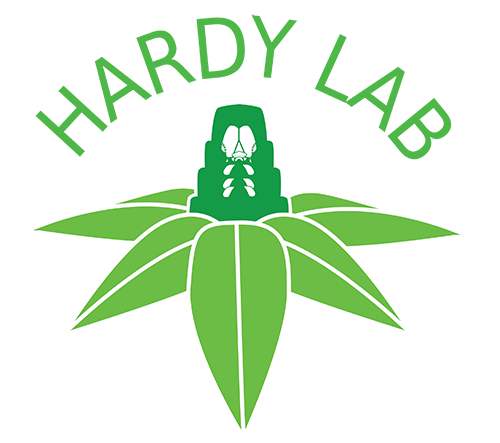Valid Names Results
Platylecanium faveolatum Hodgson, 2025 (Coccidae: Platylecanium)Nomenclatural History
- Platylecanium faveolatum Hodgson 2025a: 171. Type data: MALAYA: Cameron Highlands Road, on Castanopsis hullettii, 3/25/1964, by S.W. Brown. Holotype, female, by original designation Type depository: Washington: United States National Entomological Collection, U.S. National Museum of Natural History, District of Columbia, USA; accepted valid name Notes: Paratype slides: collection data as for holotype (2/2 adf, fairly heavily sclerotised) (USNM). Illustr.
Common Names
Ecological Associates
Hosts:
Families: 1 | Genera: 1
- Fagaceae
- Castanopsis lucida | Hodgso2025a | (= Castanopsis hullettii)
Geographic Distribution
Countries: 1
- Malaysia
- Malaya | Hodgso2025a
Keys
Remarks
- Systematics: Slide-mounted adult female body oval, quite broad and rounded at both ends, length 2.8‒2.9 mm, width 2.0‒2.5 mm; dorsum more-or-less symmetrical but venter clearly asymmetric; anal cleft about 1/8th of body length. P. faveolatum is closest to non-asymmetric P. asymmetricum, P. mesuae and P. cribrigerum but differs from all of them in having: (i) multilocular disc-pores with only 6 or 7 loculi, (ii) quite large preopercular pores which are about equally frequently associated with all clear areas, and (iii) capitate dorsal setae. The other species have (i) multilocular disc-pores mostly with 10 loculi, (ii) rather small preopercular pores which are few or absent in association with anterior clear areas, and (iii) sharply pointed dorsal setae. (Hodgson, 2025a)
- Structure: Adult female P. faveolatum is unique amongst known Platylecanium species in having only 6‒8 loculi in each multilocular disc-pore and in lacking a membranous ray extending medially from each stigmatic cleft. Other characters of note are: (i) the honeycomb appearance of the derm in mature specimens; (ii) the long marginal setae, much longer than dorsal setae; (iii) capitate dorsal setae; (iv) preopercular pores rather abundant and approximately equally frequently associated with all four clear areas; (v) a non-crenulated margin; (vi) anal plates only slightly longer than combined width and each with apical seta set back from apex; (vii) legs reduced to just claws, lacking digitules, and (viii) antennae with obscure segmentation and a reduced number of setae. (Hodgson, 2025a)
- Biology: Slide-mounted adult female body oval, quite broad and rounded at both ends, length 2.8‒2.9 mm, width 2.0‒2.5 mm; dorsum more-or-less symmetrical but venter clearly asymmetric; anal cleft about 1/8th of body length. P. faveolatum is closest to non-asymmetric P. asymmetricum, P. mesuae and P. cribrigerum but differs from all of them in having: (i) multilocular disc-pores with only 6 or 7 loculi, (ii) quite large preopercular pores which are about equally frequently associated with all clear areas, and (iii) capitate dorsal setae. The other species have (i) multilocular disc-pores mostly with 10 loculi, (ii) rather small preopercular pores which are few or absent in association with anterior clear areas, and (iii) sharply pointed dorsal setae.
- General Remarks: Detailed description and illustration in Hodgson, 2025a.
Illustrations
Citations
- Hodgso2025a: description, diagnosis, distribution, host, illustration, taxonomy, 171-174


